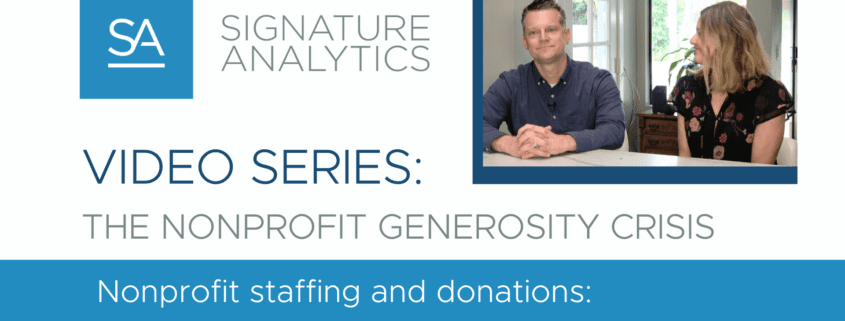Nonprofit Staffing and Donations: How to Manage after the COVID Influx
In the wake of the COVID-19 pandemic, the nonprofit sector has encountered what Signature Analytics’ founder, Jason Kruger, and consulting CFO, Laura Bertagnolli, term the “generosity crisis.” This phenomenon describes the challenging scenario where nonprofits, having scaled up operations due to an influx of donations during the pandemic, now face reduced funding while the community’s needs remain high or even greater than before.
The Challenge at Hand
During the pandemic, many nonprofit organizations saw a significant increase in contributions, allowing them to expand services and impact. However, as the immediate crisis subsided, so did the surge in donations, leaving these organizations with expanded capacities but diminished resources. This disparity has forced many nonprofits to reassess their budgets, often relying on reserves to balance their finances.
Strategic Responses to the Crisis
One critical area of focus is budget management, especially given that staffing typically accounts for around 60% of a nonprofit’s budget. Organizations must scrutinize their service offerings against their operational capacity, a task that is as challenging as it is necessary.
“Nonprofits must examine whether they can sustain their current level of infrastructure in the face of reduced funding”
Successful nonprofits have navigated these turbulent waters by fostering strong executive teams and board engagement. Effective boards actively oversee reserve levels, ensuring the organization maintains a sustainable financial cushion. Additionally, a robust budgeting process that adopts a bottoms-up approach, coupled with diligent cash flow forecasting, is essential for organizations to avoid dipping into reserves for operational expenses.
Collaboration as a Path Forward
Another strategy that has emerged is collaboration. By partnering with other service providers, nonprofits can extend their reach and efficacy without overextending financially. This approach not only optimizes resources but also maximizes the impact on the community.
The generosity crisis presents a complex set of challenges for the nonprofit sector. However, with strategic financial management, active board involvement, and a willingness to collaborate, organizations can navigate these difficulties and continue to serve their communities effectively.




